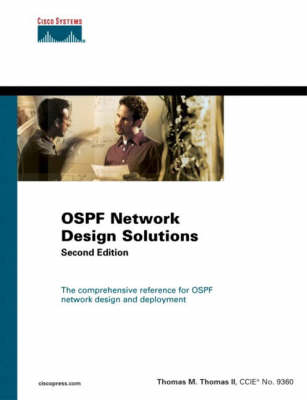The comprehensive reference for OSPF network design and deployment
- Understand the full dynamics of OSPF network components, how they interact with one another, and how to configure them
- Increase the efficiency of your OSPF network through a variety of performance tuning techniques
- Apply load balancing to enhance OSPF's capability to adapt to network topology changes
- Ensure seamless communication between OSPF and other Interior Gateway Protocols (IGPs) and OSPF and BGP through redistribution
- Optimize network stability and efficiency with OSPF summarization
- Maximize your ability to properly manage an ever-changing OSPF network landscape through Simple Network Management Protocol (SNMP) and Management Information Bases (MIBs)
- Develop a practiced, tested security plan to protect your OSPF network
- Optimize the efficiency and bandwidth of your OSPF network through the integration of MPLS
- Complete your basic OSPF knowledge gaps with a boiled down summary of the OSPF RFCs
One of the most prevalent Interior Gateway Protocols (IGPs), OSPF is in use in numerous networks across the globe. Open Shortest Path First (OSPF) is also one of the most widely tested protocols if you choose to pursue a networking certification. From a technical perspective, the overwhelming presence of OSPF ensures that you will encounter it at some point in your career. As a result, every networking professional should understand how OSPF operates, how to configure and troubleshoot this important protocol, and most importantly how to design a network that uses OSPF.
OSPF Network Design Solutions, Second Edition provides comprehensive coverage of OSPF network design, deployment, management, and troubleshooting. The book begins in Part I by providing you with a common-sense understanding of the primary building blocks of internetworking, and follows up with a detailed examination of how OSPF fits into the big picture. You will also learn how OSPF neighboring routers communicate with one another via link-state advertisements (LSAs) and how to optimize this communication for network efficiency. Part II begins with a detailed explanation of how to apply the "golden rules of design" to create an optimal OSPF network and follows up with a logical approach to configuring OSPF routers and areas. Part II concludes with hard-to-find information about how to redistribute RIP into OSPF and OSPF into BGP as well as how to make your OSPF network more efficient through summarization. Part III provides you with detailed information about how to keep pace with network growth through tested network management tools and techniques. Furthermore, you will learn how to secure your OSPF network from inside and outside attackers and how to troubleshoot your network should problems arise. Part III concludes with timely information about how to accommodate BGP and MPLS in an OSPF network.
- ISBN10 1587050323
- ISBN13 9781587050329
- Publish Date 24 April 2003 (first published 21 October 1998)
- Publish Status Out of Print
- Out of Print 8 April 2009
- Publish Country US
- Imprint Cisco Press
- Edition 2nd edition
- Format Hardcover
- Pages 768
- Language English
